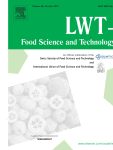Ver ítem
- xmlui.general.dspace_homeCentros e Institutos de InvestigaciónCIA. Centro de Investigaciones de AgroindustriaInstituto de Tecnología de AlimentosArtículos científicosxmlui.ArtifactBrowser.ItemViewer.trail
- Inicio
- Centros e Institutos de Investigación
- CIA. Centro de Investigaciones de Agroindustria
- Instituto de Tecnología de Alimentos
- Artículos científicos
- Ver ítem
Physicochemical and functional characterization of by-products from chia (Salvia hispanica L.) seeds of Argentina
Resumen
The objective of this study was to characterize the physicochemical and functional properties of meals (M) and fibrous fractions (FRF) of chia seeds (Salvia hispanica L.), and to compare the effect of oil extraction methods (pressing -p- and solvent extraction -s-) and sieving process on these properties. Both processes affect the physicochemical and functional properties of residual meals and their corresponding fibrous fractions. Mp and FRFp showed a
[ver mas...]
The objective of this study was to characterize the physicochemical and functional properties of meals (M) and fibrous fractions (FRF) of chia seeds (Salvia hispanica L.), and to compare the effect of oil extraction methods (pressing -p- and solvent extraction -s-) and sieving process on these properties. Both processes affect the physicochemical and functional properties of residual meals and their corresponding fibrous fractions. Mp and FRFp showed a significantly higher residual oil content than Ms and FRFs (11.39, 10.85, 0.21 and 0.21 g/100 dry base, respectively). The sieving process of both meals allowed to obtain fibrous fractions with a significant increase of crude fiber (27.57, 32.84, 23.81 and 28.35 g/100 g in Ms, FRFs, Mp and FRFp, respectively), and a marked decrease of protein content (41.36, 35.32, 35.00 and 33.74 g/100 g in Ms, FRFs, Mp and FRFp, respectively). Total dietary fiber and their respective components (soluble and insoluble dietary fiber) were significantly higher in FRF. All the samples exhibited a high antioxidant activity due to the presence of phenolic compounds and tocopherols in the case of Mp and FRFp. Ms and FRFs presented a better oil-holding capacity, organic molecule absorption capacity, emulsifying activity and emulsion stability than Mp and FRFp, and allowed to achieve more stable emulsions. FRFs showed the highest values of water absorption and adsorption capacity.
[Cerrar]

Autor
Capitani, Marianela Ivana;
Spotorno, Viviana Graciela;
Nolasco, Susana María;
Tomás, Mabel Cristina;
Fuente
LWT - Food Science and Technology 45 (1) : 94-102 (January 2012)
Fecha
2012-01
Editorial
Elsevier
ISSN
0023-6438
Formato
pdf
Tipo de documento
artículo
Palabras Claves
Derechos de acceso
Restringido
 Excepto donde se diga explicitamente, este item se publica bajo la siguiente descripción: Creative Commons Attribution-NonCommercial-ShareAlike 2.5 Unported (CC BY-NC-SA 2.5)
Excepto donde se diga explicitamente, este item se publica bajo la siguiente descripción: Creative Commons Attribution-NonCommercial-ShareAlike 2.5 Unported (CC BY-NC-SA 2.5)

